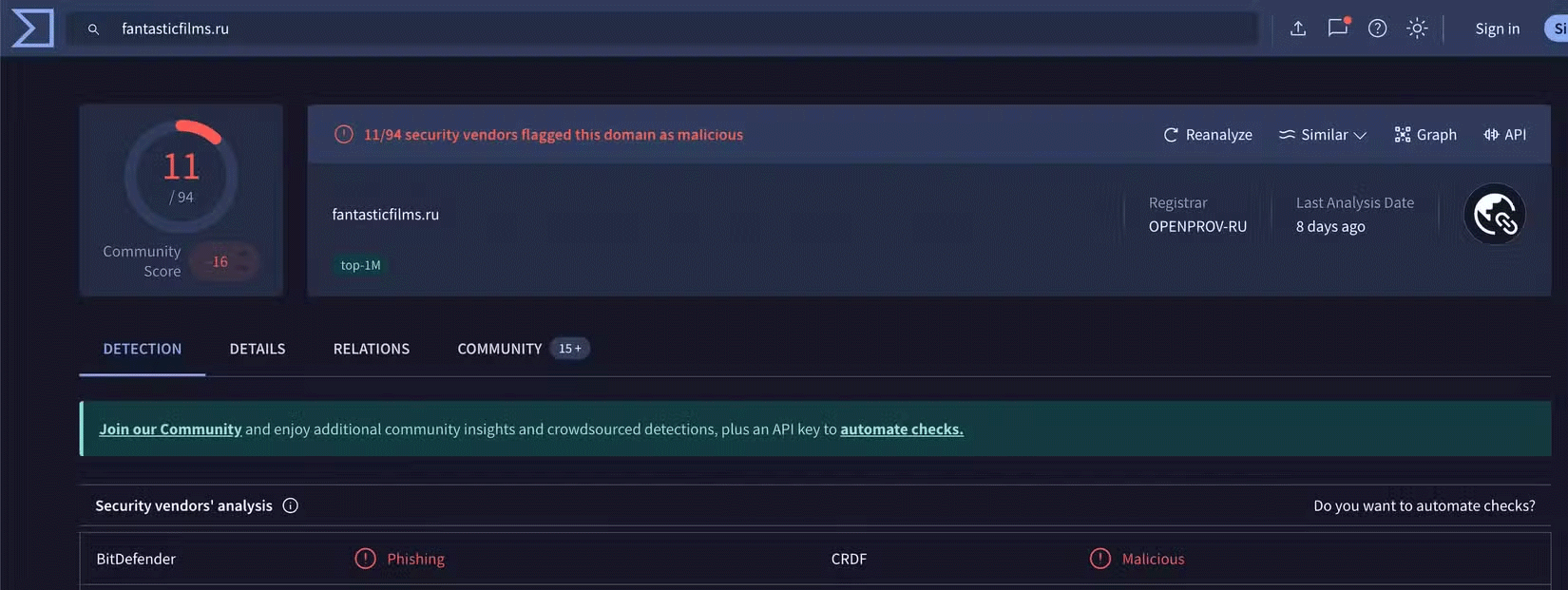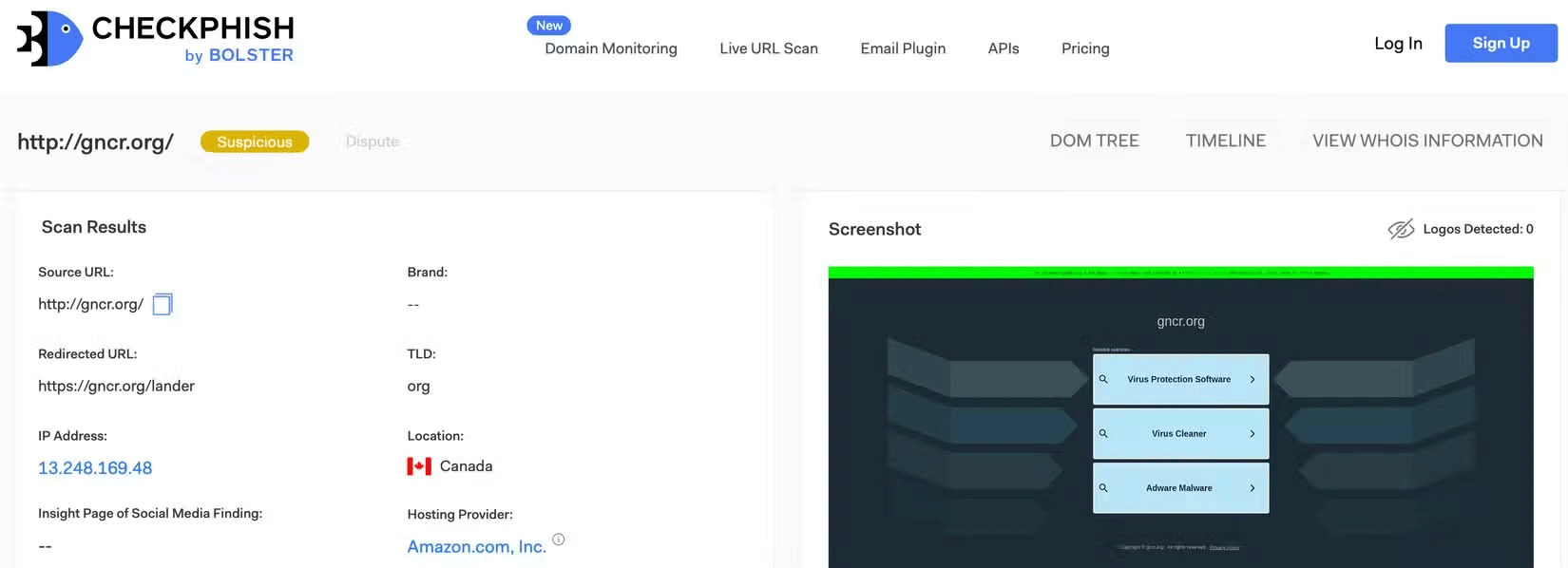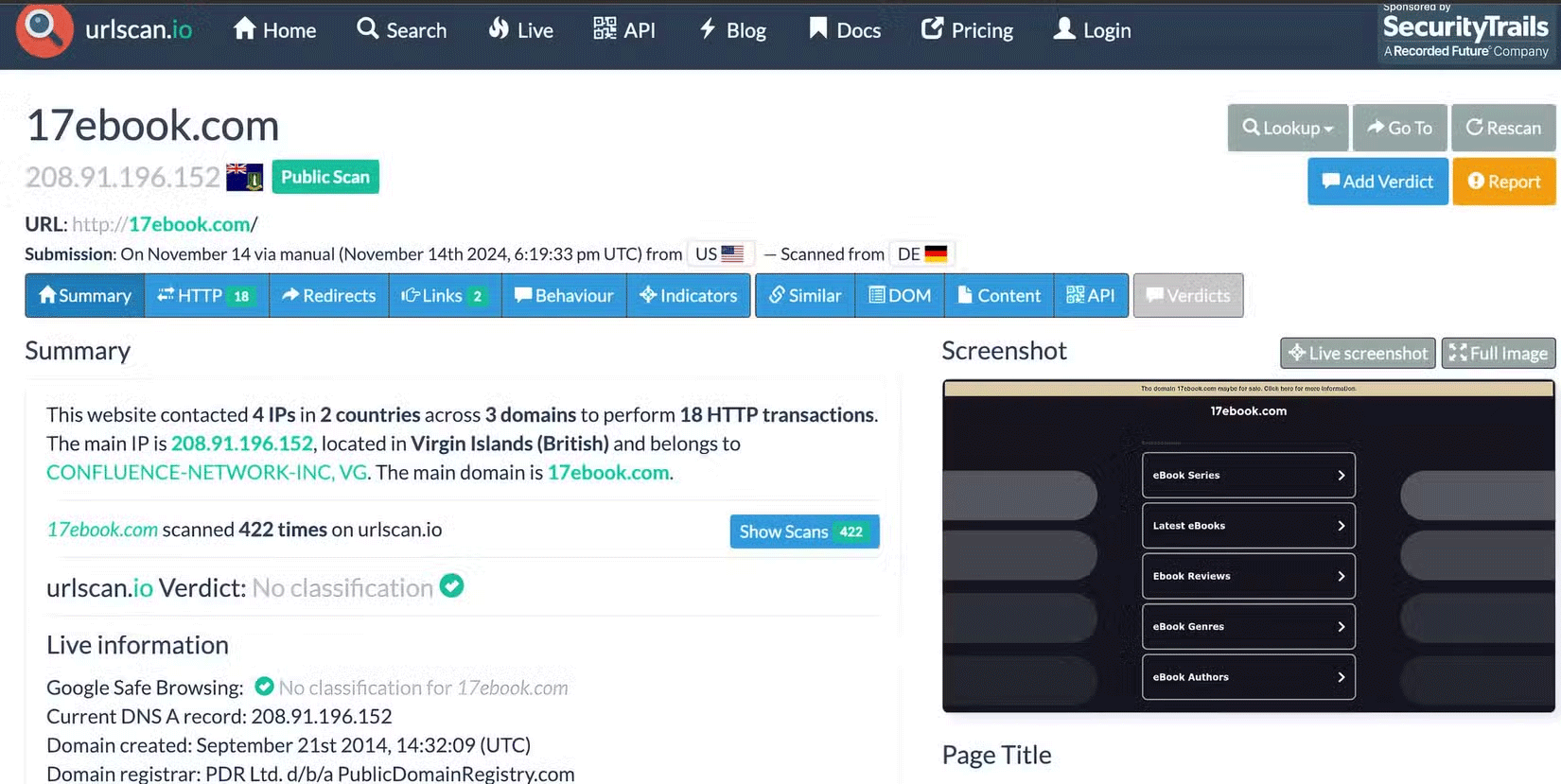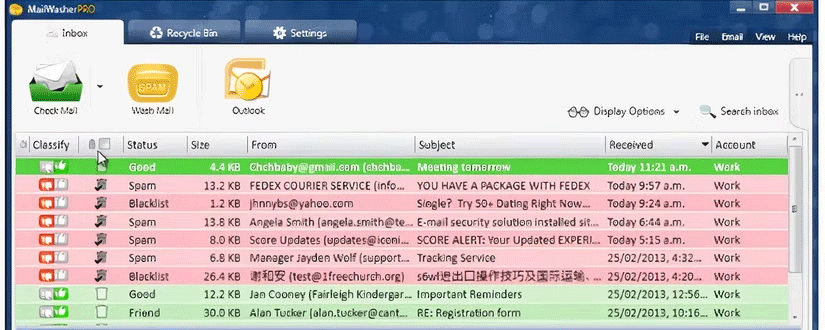4 tools to detect phishing emails
Email phishing isn't as simple as it used to be. Scammers are now tech-savvy criminals who use advanced tools to trick their victims. But they're not the only ones with an arsenal of tools at their disposal.
1. VirusTotal

Most phishing emails will send you files and links attached or try to take you to a website. How do you know if these files, links, and websites are safe?
One way to find out is to run them through VirusTotal's malware scanner. When run through VirusTotal's free detection feature, over 70 antivirus scanners and URL/domain blocking services will analyze your file, link, or website.
After running the scanner, you'll be presented with results from your antivirus scanner, indicating whether the link, file, or domain you entered is considered clean or some form of malware. For example, a VirusTotal scan of 17ebook.com shows that some sites consider it malicious, malware, or phishing, so you should probably avoid it.
2. CheckPhish

Before clicking on a link that takes you to an unknown website, make sure to run it through a website scanner like CheckPhish. CheckPhish scans suspicious websites to determine if they are malicious. After scanning a website, you'll be notified if it's clean, suspicious, or a known threat. You'll also learn information like the site's IP location, hosting provider, certificate details, related URLs, and phishing history.
CheckPhish will also warn you if the URL in question is a typosquatting site. A typosquatting site is a site that mimics a legitimate site but is designed with malicious intent. These sites are usually one or two characters different from the more popular sites. Once you visit, you may not know you're on the wrong site because the mimicking domain is similar to the site you're trying to access.
3. urlscan.io

urlscan.io is only used to analyze websites for malware. After the scan, you will receive a verdict of whether the website is safe/unsafe or unknown. You will also be provided with a screenshot of the website, DNS and IP records, and the platform the website is hosted on.
4. Mailwasher

Regardless of your email client, it will most likely filter out phishing, spam, and junk emails. But that doesn't necessarily mean that downloading a spam blocker like Mailwasher is unnecessary. Cybersecurity experts believe in a concept called defense in depth, which means that multiple layers of security create a strong digital defense. Using Mailwasher in conjunction with the built-in spam filter used by your email client will only increase your security.
Mailwasher can detect spam, phishing emails, viruses, and even unwanted newsletters and emails. It's not a browser plug-in that runs in the background when you open your mail client. Instead, you have to connect your email to MailWasher and run the program to check your emails. If you suspect an email, you can preview it without opening it. If the program judges the email as malicious, you can delete it from within the program itself.
Scammers may have evolved in recent years, but they aren't the only ones who can leverage the latest tools to their advantage.
You should read it
- Warning: New email phishing tactics appear
- How to identify phishing emails
- [Infographic] How to recognize and prevent Phishing attacks
- Beware of the 7 most common types of spam
- The only secure email is the text-only email
- 5 signs to identify phishing websites
- Microsoft warns of phishing campaigns targeting Outlook Web App and Office 365 users
- Outlook on Android is about to add phishing email feature
May be interested
- Google wants to test user knowledge about phishing emails
 on tuesday, jigsaw, google's 'technology incubator,' quietly released a small test to test users' ability to identify phishing emails.
on tuesday, jigsaw, google's 'technology incubator,' quietly released a small test to test users' ability to identify phishing emails. - Microsoft shows how to avoid trapping phishing
 microsoft has issued a warning and recommended ways to protect users of e-mail services ...
microsoft has issued a warning and recommended ways to protect users of e-mail services ... - Watch out for phishing attacks that can steal Apple ID passwords very hard to detect
 felix krause, the ios developer and founder of fastlane.tools, describes a nearly undetectable phishing attack, explaining how ios apps poisoned to steal apple id passwords to access icloud accounts and personal data.
felix krause, the ios developer and founder of fastlane.tools, describes a nearly undetectable phishing attack, explaining how ios apps poisoned to steal apple id passwords to access icloud accounts and personal data. - Google discovers over 18 million Covid-19 phishing emails per day
 tipsmake - increasing fraudulent tactics to take advantage of users' 'bad news' mentality in the context of covid-19 epidemic becoming the top concern worldwide.
tipsmake - increasing fraudulent tactics to take advantage of users' 'bad news' mentality in the context of covid-19 epidemic becoming the top concern worldwide. - Warning: Phishing attacks targeting Microsoft Teams show signs of sharp increase
 microsoft teams is reluctant to be the new target that online scammers are targeting.
microsoft teams is reluctant to be the new target that online scammers are targeting. - [Infographic] 4 types of Phishing are easy to trap users
![[Infographic] 4 types of Phishing are easy to trap users](https://tipsmake.com/img/no-image-80-80.png) phishing often appears as a reliable activity by legitimate companies or a reputable electronic information site like ebay, paypal, gmail ..
phishing often appears as a reliable activity by legitimate companies or a reputable electronic information site like ebay, paypal, gmail .. - Beware of phishing emails impersonating Facebook
 recently a lot of people received emails sent from facebookmail.com, and these letters look exactly like any facebook notification emails, but this is actually a rather sophisticated scam. of hacker...
recently a lot of people received emails sent from facebookmail.com, and these letters look exactly like any facebook notification emails, but this is actually a rather sophisticated scam. of hacker... - What are Smishing, Phishing and Vishing? How are they different?
 have you ever received strange emails, texts or calls asking for money, your personal information or you clicked on some shady links to get some work done? chances are some scammers are trying to lure you in using phishing, smishing or vishing techniques.
have you ever received strange emails, texts or calls asking for money, your personal information or you clicked on some shady links to get some work done? chances are some scammers are trying to lure you in using phishing, smishing or vishing techniques. - What is Spear Phishing?
 you may have encountered spear phishing. when using this technique, cyber criminals will send you a message from an audience you know, asking you to provide your personal information.
you may have encountered spear phishing. when using this technique, cyber criminals will send you a message from an audience you know, asking you to provide your personal information. - Excel continues to be used as a lure for online fraud with complex mechanisms
 the popular tools and software used by microsoft have become the target of hackers to deploy online attacks many times.
the popular tools and software used by microsoft have become the target of hackers to deploy online attacks many times.





![[Infographic] 4 types of Phishing are easy to trap users](https://tipsmake.com/data/thumbs_80x80/[infographic]-4-types-of-phishing-are-easy-to-trap-users_thumbs_80x80_q5IK2um5z.jpg)




 What is Bixby? How to use Bixby most effectively
What is Bixby? How to use Bixby most effectively New Features from Office Insider Preview Build for Mac
New Features from Office Insider Preview Build for Mac The Difference Between AMD Ryzen U, H, HS and HX Laptop CPUs
The Difference Between AMD Ryzen U, H, HS and HX Laptop CPUs How to calculate TV inches? Convert inches to cm most accurately
How to calculate TV inches? Convert inches to cm most accurately Microsoft Word or Google Docs is better for you?
Microsoft Word or Google Docs is better for you? How does Thunderbolt actually work?
How does Thunderbolt actually work?